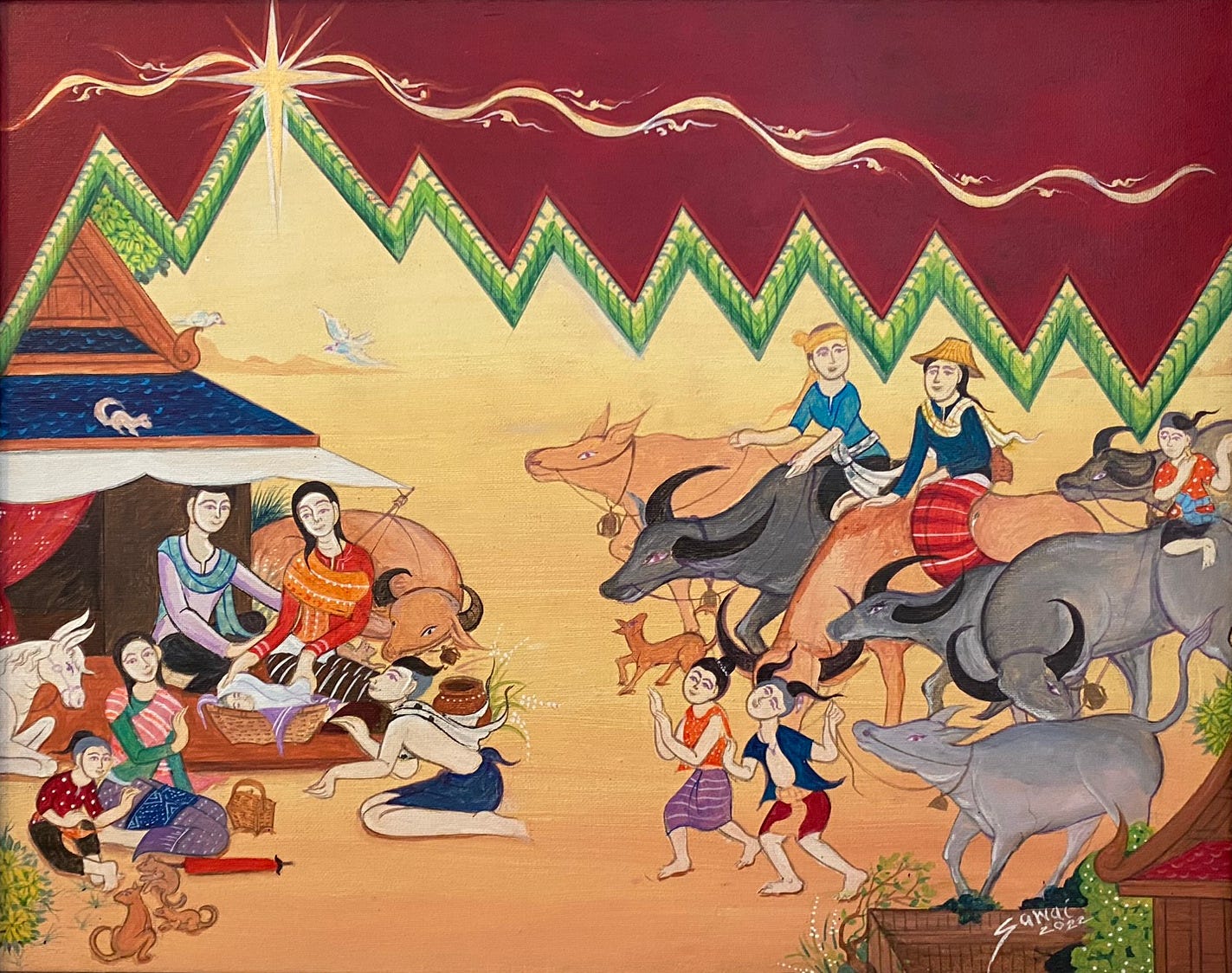For Advent this year, I have been sharing a poem and a work of visual art each week.
I wrote this week’s poem on Christmas Eve, 2017, alone in a hospital room with our two-month-old son who was suffering from bronchiolitis. I sat there alone with him, helpless to do anything but pray that his fragile little body would finally turn the corner and start getting better instead of worse.
Thankfully, our son made it through just fine. But that Christmas Eve forever deepened my awe of the unthinkable, daring reality of what God chose to do by coming to earth, not as an adult, but as a needy, fragile baby like my son.
Breathe
This Christmas Eve
my infant son
lies wrapped in swaddling cloths
and oxygen tubes.
Vulnerable.
Our hearts have held their breath
too many times
for love of his little life.
Tonight I marvel
that an eternal God
would make himself
a breathing baby boy
and, vulnerable,
sleep in our sin-sick world—
that, having died,
we might breathe again.
Thai Nativity
I conclude this Advent series with one of my favorite Christmas paintings, Sawai Chinnawong’s Thai Nativity. An original 2022 re-painting of this work (which he first painted in 1984) hangs in our home as a beautiful and hopeful expression of Jesus making his home in Thailand, where only one percent of people are Christian—and where most Thais still perceive Christianity as a foreign Western religion.
Sawai Chinnawong (pictured below) is a Thai Christian artist who paints the Christian story using traditional Thai styles drawn from his experience as a Buddhist mural artist. Here are three things to notice about this painting of Jesus’ birth:
The people are everyday Thai folks, wearing traditional Thai clothes and riding water buffalos (not royal elephants). As Chinnawong wrote in That Man Who Came to Us, Jesus “was born in humility so that all people can come close to him.”
The painting, however, is defined by the striking traditional Thai colors of holiness: red, which represents heaven, and gold, which signifies divine energy.
The jagged line across the painting, called a sinthao, is usually used to mark off holy spaces in Thai religious murals. But Chinnawong has done something remarkable with his sinthao. Directly above Jesus, the star completely eclipses this division between heaven and earth, brilliantly expressing the significance of Jesus’ birth: heaven breaking through into the lives of everyday people on earth.
Like any good work of art, Chinnawong’s painting does more than words could ever capture, but I hope the above insights help you to appreciate one of my favorite Christmas paintings as we prepare to celebrate the birth of Jesus this week.
Thank you for reading and have a Merry Christmas!
Notes
Thanks to Fathom Magazine for originally publishing my poem “Breathe.”
You can find more of Chinnawong’s work at the Overseas Ministries Study Center, in this article from Christianity Today, and in the books The Christian Story: Five Asian Artists Today and That Man Who Came to Us.






Beautiful!! (Both the poem and the painting)
A wonderful poem. Thanks for sharing it. My wife and I lived and taught at McGilvary (the Christian Studies Program at Payap University) in Chiang Mai. We love Sawai's paintings and have a copy of one. He was at McGilvary during part of the time we were there. He is a really nice guy as well as a fabulous Thai artist. Peace, LaMon